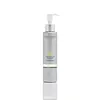What's inside
What's inside
 Key Ingredients
Key Ingredients

 Benefits
Benefits

 Concerns
Concerns

 Ingredients Side-by-side
Ingredients Side-by-side

Helianthus Annuus Seed Oil
EmollientCaprylic/Capric Triglyceride
MaskingPolysorbate 80
EmulsifyingVitis Vinifera Seed Oil
EmollientTetrahexyldecyl Ascorbate
AntioxidantTocopherol
AntioxidantPyrus Malus Juice
Skin ConditioningCitrus Limon Juice
Skin ConditioningMalus Domestica Fruit Cell Culture Extract
Skin ConditioningVitis Vinifera Fruit Cell Extract
Skin ConditioningCitrus Limon Leaf Cell Extract
Skin ConditioningLitsea Cubeba Fruit Oil
MaskingCinnamomum Camphora Wood Oil
MaskingHelianthus Annuus Seed Oil, Caprylic/Capric Triglyceride, Polysorbate 80, Vitis Vinifera Seed Oil, Tetrahexyldecyl Ascorbate, Tocopherol, Pyrus Malus Juice, Citrus Limon Juice, Malus Domestica Fruit Cell Culture Extract, Vitis Vinifera Fruit Cell Extract, Citrus Limon Leaf Cell Extract, Litsea Cubeba Fruit Oil, Cinnamomum Camphora Wood Oil
Helianthus Annuus Seed Oil
EmollientCocos Nucifera Oil
MaskingPolyglyceryl-4 Oleate
EmulsifyingVitis Vinifera Seed Oil
EmollientHelianthus Annuus Seed Wax
Skin ConditioningPersea Gratissima Oil
Skin ConditioningSqualane
EmollientC10-18 Triglycerides
EmollientPhytosterols
Skin ConditioningBisabolol
MaskingHydrogenated Vegetable Oil
EmollientOlea Europaea Fruit Oil
MaskingGlyceryl Stearate
EmollientSorbitan Oleate
EmulsifyingTocopherol
AntioxidantAscorbyl Palmitate
AntioxidantTocopheryl Acetate
AntioxidantGlycerin
HumectantWater
Skin ConditioningLecithin
EmollientPentylene Glycol
Skin ConditioningHydrolyzed Rice Protein
Skin ConditioningOpuntia Ficus-Indica Stem Extract
Skin ConditioningCaprylic/Capric Triglyceride
MaskingXanthan Gum
EmulsifyingButylene Glycol
HumectantArginine
MaskingPhenylalanine
MaskingGlycine
BufferingLysine
Skin ConditioningSisymbrium Irio Seed Oil
MaskingPotassium Sorbate
PreservativeSodium Hydroxide
BufferingOligopeptide-4
Skin ConditioningOligopeptide-177
Helianthus Annuus Seed Oil, Cocos Nucifera Oil, Polyglyceryl-4 Oleate, Vitis Vinifera Seed Oil, Helianthus Annuus Seed Wax, Persea Gratissima Oil, Squalane, C10-18 Triglycerides, Phytosterols, Bisabolol, Hydrogenated Vegetable Oil, Olea Europaea Fruit Oil, Glyceryl Stearate, Sorbitan Oleate, Tocopherol, Ascorbyl Palmitate, Tocopheryl Acetate, Glycerin, Water, Lecithin, Pentylene Glycol, Hydrolyzed Rice Protein, Opuntia Ficus-Indica Stem Extract, Caprylic/Capric Triglyceride, Xanthan Gum, Butylene Glycol, Arginine, Phenylalanine, Glycine, Lysine, Sisymbrium Irio Seed Oil, Potassium Sorbate, Sodium Hydroxide, Oligopeptide-4, Oligopeptide-177
Ingredients Explained
These ingredients are found in both products.
Ingredients higher up in an ingredient list are typically present in a larger amount.
This ingredient is an emollient, solvent, and texture enhancer. It is considered a skin-softener by helping the skin prevent moisture loss.
It helps thicken a product's formula and makes it easier to spread by dissolving clumping compounds.
Caprylic Triglyceride is made by combining glycerin with coconut oil, forming a clear liquid.
While there is an assumption Caprylic Triglyceride can clog pores due to it being derived from coconut oil, there is no research supporting this.
Learn more about Caprylic/Capric TriglycerideHelianthus Annuus Seed Oil is the oil derived from the seeds of a Sunflower. Sunflower seed oil is non-fragrant. It is an emollient, meaning it helps to soften the skin.
Sunflower seed oil contains many fatty acids. The fatty acids found in sunflower seeds include (from highest amount to least): linoleic acid, myristic acid, palmitic acid, stearic acid, arachidic acid, oleic acid, and linolenic acid.
These fatty acids help the skin create ceramides. Ceramides play a role in repairing the skin barrier.
Helianthus Annuus Seed Oil helps moisturize the skin. This in turn helps the skin look more rejuvenated and smoother.
Sunflowers are rich in vitamin E.
Historians believe Indigenous cultures of North America domesticated sunflowers before corn. Thus they relied on sunflower oil for a variety of uses. One such use is moisturizing skin and hair.
Sunflower seed oil may not be fungal acne safe. We recommend speaking with a professional if you have any concerns.
Learn more about Helianthus Annuus Seed OilTocopherol (also known as Vitamin E) is a common antioxidant used to help protect the skin from free-radicals and strengthen the skin barrier. It's also fat soluble - this means our skin is great at absorbing it.
Vitamin E also helps keep your natural skin lipids healthy. Your lipid skin barrier naturally consists of lipids, ceramides, and fatty acids. Vitamin E offers extra protection for your skin’s lipid barrier, keeping your skin healthy and nourished.
Another benefit is a bit of UV protection. Vitamin E helps reduce the damage caused by UVB rays. (It should not replace your sunscreen). Combining it with Vitamin C can decrease sunburned cells and hyperpigmentation after UV exposure.
You might have noticed Vitamin E + C often paired together. This is because it is great at stabilizing Vitamin C. Using the two together helps increase the effectiveness of both ingredients.
There are often claims that Vitamin E can reduce/prevent scarring, but these claims haven't been confirmed by scientific research.
Learn more about TocopherolVitis Vinifera Seed Oil comes from the grape vine. Grape seeds are a byproduct of creating grape juice or wine.
The components of grape seeds have many skin benefits. Research has found it to be antimicrobial and anti-inflammatory. It also contains many potent antioxidants such as Vitamin E , Vitamin C, proanthocyanidins, polyphenols, flavonoids, and anthocyanins. Proanthocyanidin has been shown to help even out skin tone.
Antioxidants help fight free-radical molecules. Free-radical molecules are capable of damaging our cells and other genetic material. Antioxidants help stabilize free-radicals by donating extra electrons. Grape seed extract may help reduce the signs of aging.
The antimicrobial properties of grape seed may help treat acne. However, more research is needed to support this claim.
Grape seed has also been found to help absorb UV rays. Grape seed extract should not replace your sunscreen.
The fatty acids of grape seed oil give it emollient properties. Emollients help soothe and soften your skin by creating a film. This film traps moisture within, keeping your skin hydrated.
Learn more about Vitis Vinifera Seed Oil